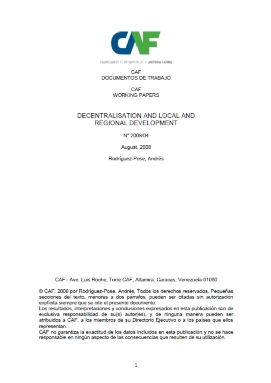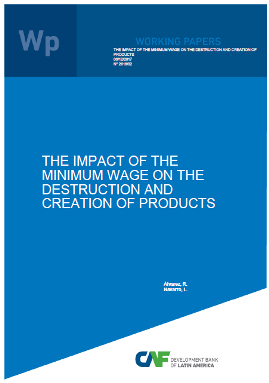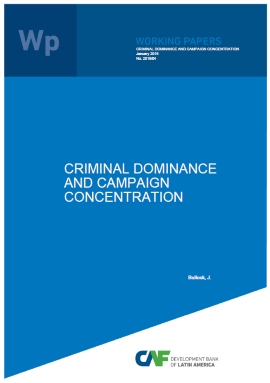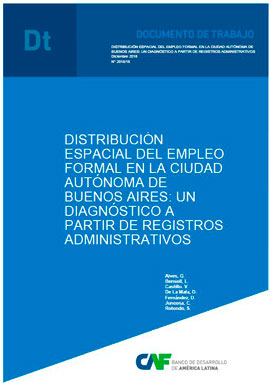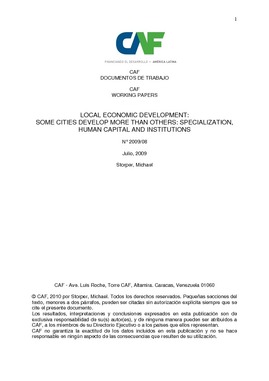Buscar
Mostrando ítems 1-10 de 38
Decentralisation and Local and Regional Development
(CAF, 2008)
Este artículo explora el impacto de la descentralización sobre el potencial para el desarrollo local y regional, tanto desde una perspectiva teórica como utilizando ejemplos de América Latina. Pone de relieve que la ...
Public financial support and innovation in Colombian manufacturing firms
(CAF, 2017-05-30)
We evaluate the impact of public financial support, both subsidies and credit, on different types of innovation in Colombian industry. We compare it with the effects of financing innovation with own resources and with ...
Input-output linkages and sector-specific distortions in the Latin American development problem
(CAF, 2017-11-03)
In this paper, I analyze the Latin American development problem using a model with input-output linkages, sectorial productivity gaps, and sector-specific distortions. I provide a characterization of the sectorial linkages ...
The impact of the minimum wage on the destruction and creation of products
(CAF, 2017-12-06)
We study the impact of changes in the legal minimum wage on the creation and destruction of products at the firm level. This can be a relevant way for increasing firm productivity and for explaining why the raises in the ...
Gender Gaps in Labor Informality: The Motherhood Effect
(CAF, 2020-12-15)
We estimate the short- and long-run labor market impacts of parenthood in a developing country, Chile, based on an eventstudy approach around the birth of the first child. We assess mechanisms behind these effects based ...
Criminal Dominance and Campaign Concentration
(CAF, 2019-01-1)
There are many journalistic and anecdotal accounts about the prevalence of electoral corrals in Brazil, geographic areas where brokers, politicians, or community leaders influence residents to vote for a specific candidate. ...
Distribución espacial del empleo formal en la ciudad autónoma de buenos aires: un diagnóstico a partir de registros administrativos
(CAF, 2018-12-01)
A partir de información geográfica detallada del universo de establecimientos productivos y del empleo registrado en la Ciudad Autónoma de Buenos Aires este trabajo documenta la localización del empleo en la ciudad en el ...
What explains output recoveries in developing and emerging market economies after the global financial crisis?
(CAF, 2017-09-26)
This paper presents a systematic assessment of the macroeconomic factors associated with differences in GDP dynamics in emerging markets in the aftermath of the global financial crisis. We implement a Bayesian Model ...
Proyecciones de ingresos y egresos fiscales para los sistemas de educación, pensiones y salud en América Latina
(CAF, 2020-12-28)
América Latina se encuentra experimentando un proceso de envejecimiento demográfico con grados de avance heterogéneos entre los distintos países. Sin embargo, dos características comunes de dicho proceso contrastan con la ...
Local economic development. Some cities develop more than others: specialization, human capital and institutions
(CAF, 2009)
Why does a certain metropolitan area grow more than another? The answer to this question has evaded much of the considerable body of scholarship on the topic. One problem may be that some of the frameworks that drive ...


